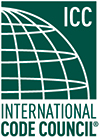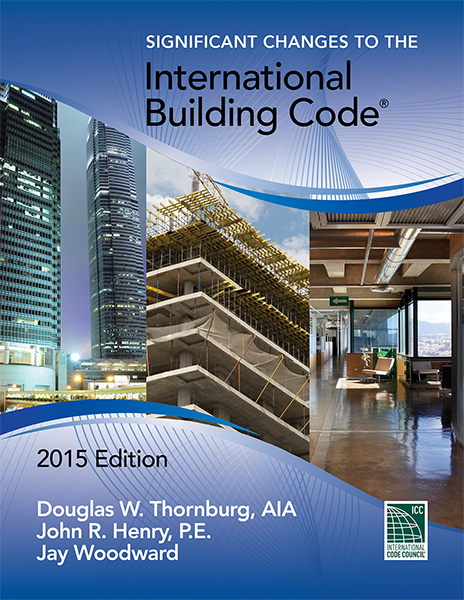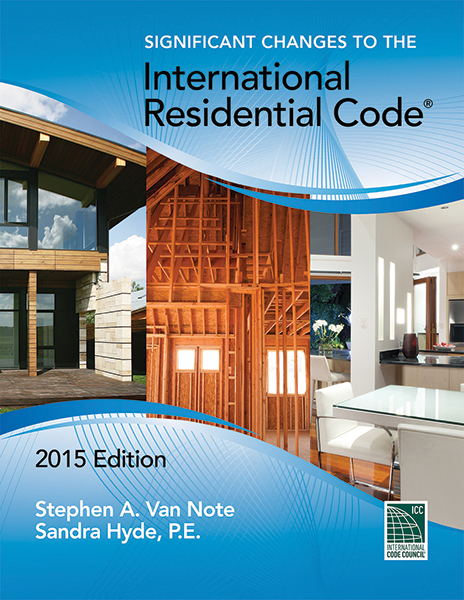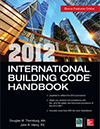 |
Codes Corner |
| Excerpts from some of ICC's most beneficial code publications and resources |
| —*ADVERTISEMENT— |
 |
| CODE UPDATE |Significant Changes to the 2015 International Residential Code | |
| (The information below is excerpted from the Significant Changes to the 2012 International Codes series.) | |
| The requirement for one habitable room with a minimum floor area of 120 square feet has been removed from the code. A 70-square-foot minimum area now applies to all habitable rooms as the smallest acceptable size for occupants to move about and use the habitable space as intended. Proponents of minimalist living have advocated smaller dwellings (tiny houses) to reduce environmental impact and provide for lower living costs. These dwellings are intended to allow for a minimalist lifestyle that doesn't demand large volumes of living space. Proponents of this change reasoned that consumers make a purposeful and informed decision as to the appropriateness of the housing they choose to live in and that the code should not place arbitrary restrictions on room size that have no demonstrable life-safety benefit. Although the change will not impact typical residential construction, it will accommodate alternatives for very small dwellings that would previously not be allowed under the International Residential Code. It may also encourage greater acceptance of and compliance with the residential code by those pursuing a minimalist lifestyle. Continue reading more on this update to the 2015 Residential Significant Changes. |
|
    |
The Significant Changes to the 2015 International Codes series has been developed by the International Code Council and published by Cengage Learning to assist code officials, architects, engineers and other construction professionals transitioning from the 2012 to the 2015 editions of the International Codes. The series offers a comprehensive yet practical analysis of hundreds of the most critical changes from a very active code development cycle. Each color publication contains: revised code text; a summary of each change listed; in-depth change analysis; and a detailed photo, illustration or table for each change to deepen understanding. Coverage reflects provisions with special significance, including new and innovative design ideas and technologies, modern materials and methods of construction, and current approaches to safety and stability. Authored by ICC code experts, these useful tools are "must-have" guides to the many important changes in the 2015 International Codes. |
| —*ADVERTISEMENT— |
 |
| CODE BASICS | Fire, Based on the 2012 International Fire Code |
| (The information below is excerpted from the 2012 Building Code Basics series.) |
| High-piled combustible storage is the storage of combustible materials in closely packed piles or combustible materials on pallets, in racks or on shelves where the top of storage is greater than 12 feet in height. The provisions in International Fire Code (IFC) Chapter 32 become applicable when goods are high-piled.
Continue reading more on this excerpt from the Building Code Basics: Fire, Based on the 2012 IFC. |
| Back to top |
| —*ADVERTISEMENT— |
 |
| CODE HANDBOOK | 2012 International Building Code Handbook | |
| (The information below is excerpted from the 2012 International Building Code Handbook.) | |
| The grade plane is a reference plane representing the average of the finished ground level adjoining the building at its exterior walls. The method for calculating grade plane can vary based on the site conditions. Continue reading more on this excerpt from the 2012 International Building Code Handbook. |
|
 |
The 2012 International Building Code Handbook is a comprehensive, full-color guide to the entire 2012 International Building Code (IBC). Authored by ICC code experts and published by McGraw-Hill to assist code officials, architects and engineers in understanding the code, this publication covers both structural and fire- and life-safety provisions. This time-saving resource makes it easy to understand and apply complex IBC requirements and achieve compliance. |
| Back to top |